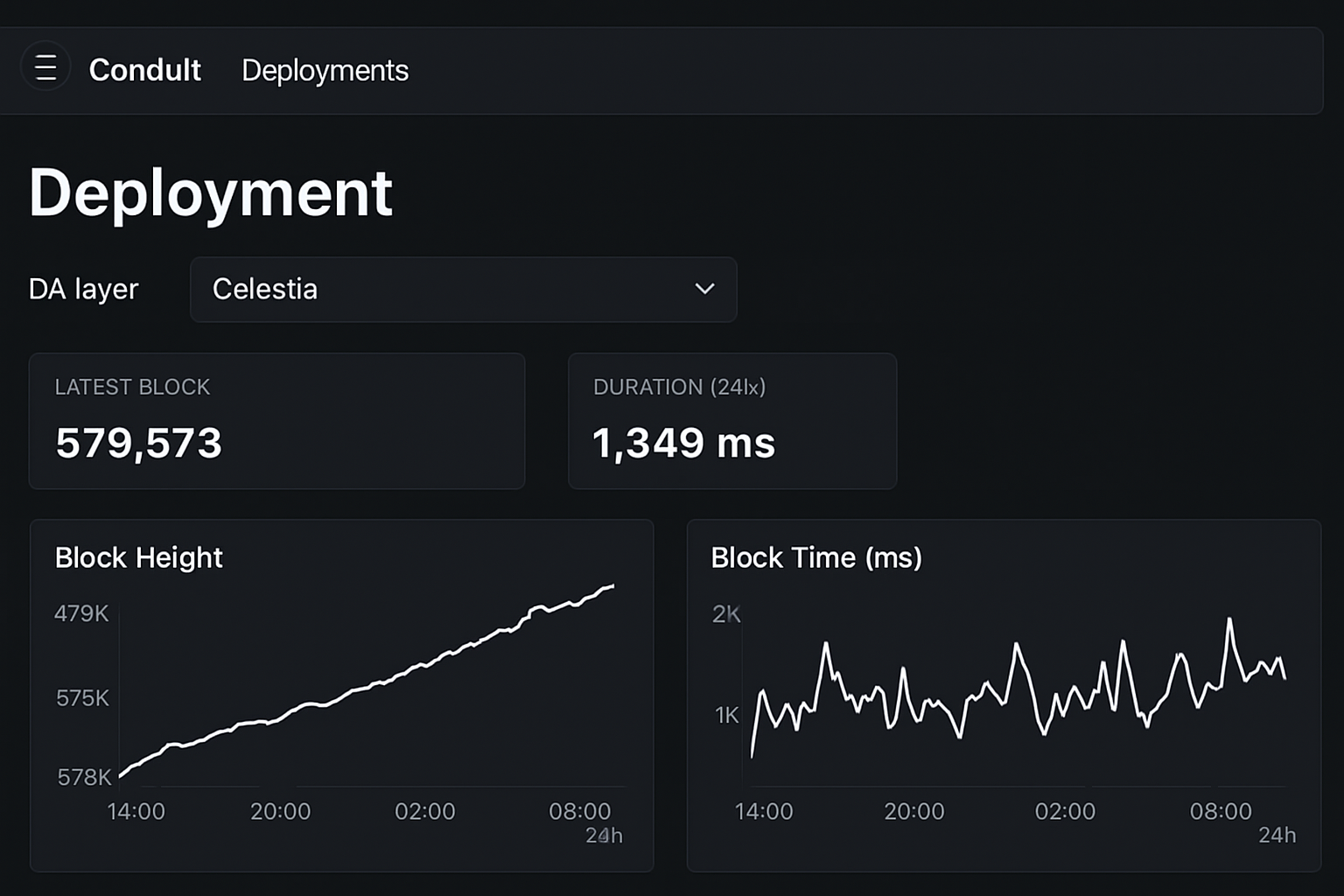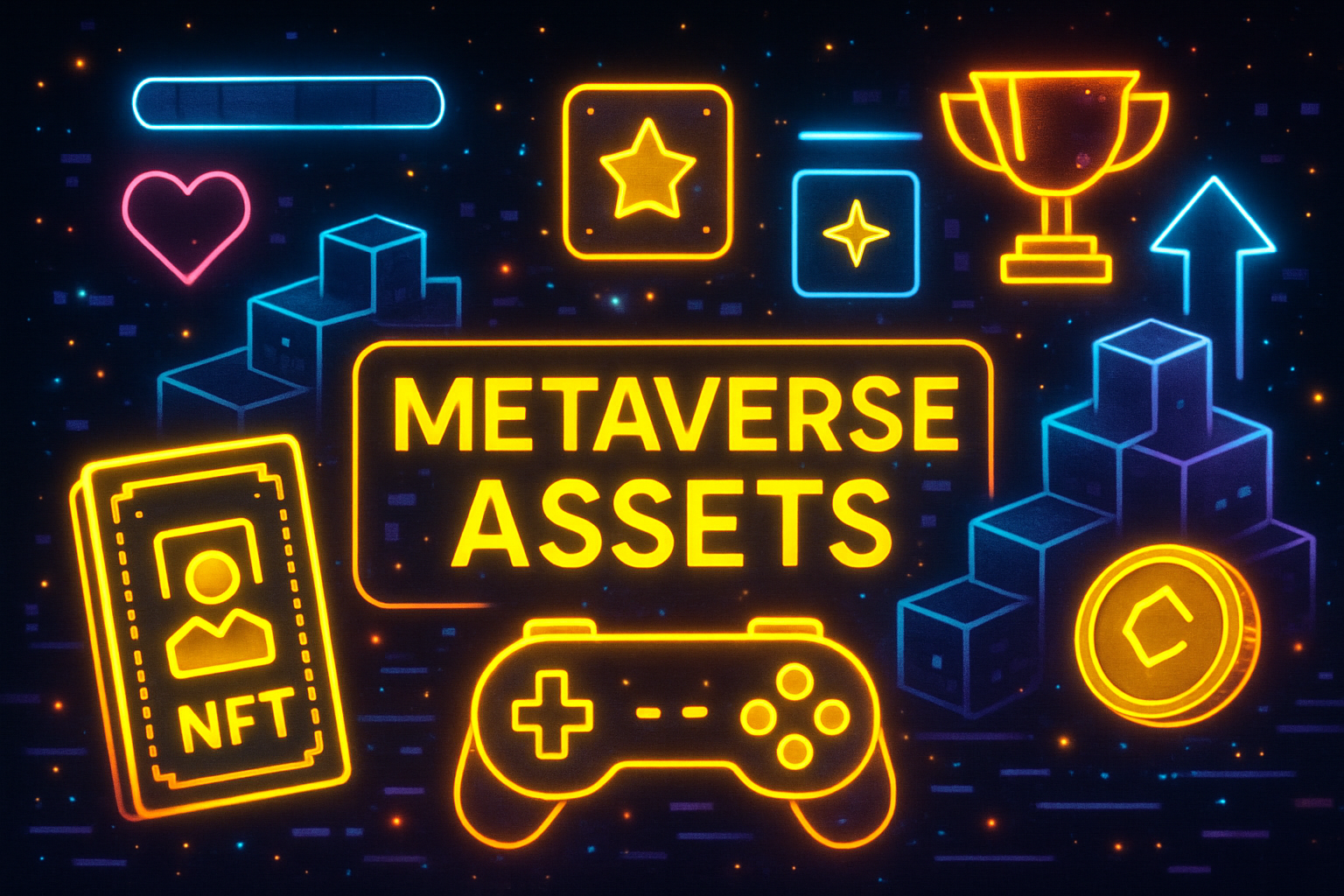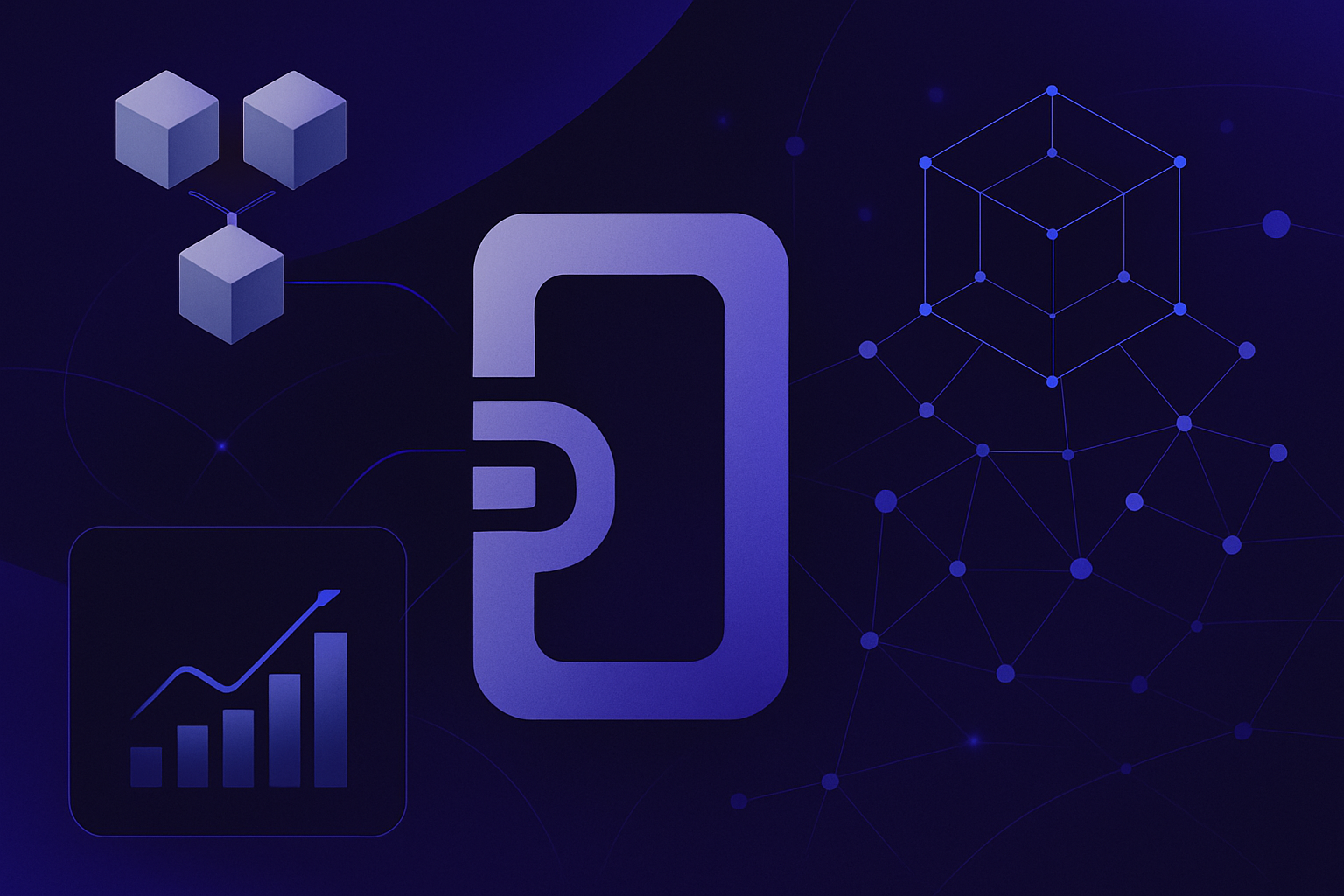
Launching a modular rollup has never been more accessible, thanks to the synergy between Conduit’s Rollup-as-a-Service platform and Celestia’s modular data availability network. Developers can now deploy robust, production-grade rollups in minutes, without deep protocol engineering or running complex infrastructure. This guide walks you through deploying a modular rollup using Conduit and Celestia, with an emphasis on clarity, current pricing, and practical steps.

Why Choose Conduit and Celestia for Modular Rollups?
Conduit streamlines the rollup deployment process by offering a user-friendly interface and powerful automation. Celestia, meanwhile, provides scalable, verifiable data availability for your rollup’s transaction data. This combination offers several advantages:
- No-code or low-code deployment: Launch a rollup without extensive development work.
- Flexible stack selection: Choose between frameworks like Optimism OP Stack or Arbitrum Orbit.
- Seamless integration with Ethereum L1 and other settlement layers.
- Transparent pricing: Testnet deployments start at $50 per month; mainnet launches require $3,000 per month plus an initial gas fee of approximately 2.79 ETH.
- Bespoke customization options, including custom gas tokens (for Arbitrum-based stacks).
Step-by-Step: Deploying Your Modular Rollup in Minutes
The process is straightforward and designed for efficiency. Here’s how you can get your own modular rollup live using Conduit and Celestia:
1. Access the Conduit Platform
Start by navigating to the official Conduit Platform. Sign in to your account or register if you’re new to the service. Once inside, click on ‘Deploy a Rollup’: this begins your journey toward a fully operational modular blockchain.
2. Configure Your Rollup Details
You’ll need to provide some basic configuration:
- Name and Chain ID: Assign a unique name and chain ID for your new network. Double-check that your chain ID isn’t already in use by referencing resources like Chainlist or ChainID Network.
- Select Your Tech Stack:
- Framework: Choose between Optimism OP Stack or Arbitrum Orbit depending on your needs.
- Settlement Layer: Pick where transactions will settle, Ethereum mainnet, Base, Zora, or Mode are all supported options.
- Data Availability Layer: Select Celestia to leverage its high-throughput data availability capabilities.
The Costs: Transparent Pricing for Testnet and Mainnet Deployments
A key advantage of using Conduit is clear pricing at every step. As of now:
- $50 per month for Sepolia testnet deployments.
- $3,000 per month for Ethereum mainnet deployments.
- An initial mainnet deployment gas fee of approximately 2.79 ETH.
This structure lets teams plan budgets with confidence, no hidden costs or surprise fees. For more details on pricing models and deployment options, you can explore additional guides such as this step-by-step breakdown of deploying on Celestia with Conduit .
Funding and Launch: Bringing Your Rollup to Life
With your configuration set, the next critical step is funding the deployer wallet. Conduit provides a secure wallet address for this purpose. Make sure it holds enough funds to cover either the $50 monthly Sepolia testnet fee or, for mainnet launches, the $3,000 monthly subscription plus an initial deployment gas fee of 2.79 ETH. This upfront clarity means you can avoid last-minute surprises and move straight into deployment once payment is confirmed.
Once funded, simply initiate the deployment through the Conduit dashboard. The platform takes care of provisioning infrastructure, connecting your rollup to Celestia’s data availability layer, and integrating with your chosen settlement network. You can track progress in real time, no manual node operations or DevOps headaches required.
After Deployment: Managing and Building on Your New Modular Rollup
After successful deployment, Conduit provides you with essential resources: RPC endpoints for connecting wallets and dApps, block explorer links for transparency, and access credentials for ongoing management. At this point, your rollup is fully EVM-compatible (if you chose an EVM stack), so deploying smart contracts is as seamless as on Ethereum or other L2s.
If you opted for Arbitrum Orbit as your framework, Conduit allows further customization, such as specifying a custom gas token contract address during setup. This flexibility lets projects fine-tune their economic models without sacrificing composability or tooling support.
Best Practices and Additional Support
To ensure a smooth experience, keep these best practices in mind:
- Double-check chain ID uniqueness before finalizing configuration.
- Test thoroughly on Sepolia before committing to mainnet costs.
- Monitor resource usage via Conduit’s dashboard to anticipate scaling needs.
- Stay updated with new features or upgrades, Conduit manages updates automatically but reviewing release notes helps you leverage improvements.
If you run into issues or want deeper integration guidance, consult Conduit’s official documentation on deploying custom rollups using Celestia DA. Community forums and Discord channels are also valuable touchpoints for troubleshooting and sharing best practices.
Real-World Examples: Who’s Using This Stack?
The modular stack powered by Conduit and Celestia isn’t just theoretical, it’s already powering production-grade networks like Base, Zora, and Mode. These projects demonstrate how modularity accelerates innovation by letting teams focus on application logic rather than infrastructure plumbing. The rapid adoption of one-click rollup launches underscores just how quickly the landscape is evolving toward developer-first blockchain solutions.
Frequently Asked Questions
Final Thoughts: Unlocking Modular Blockchain Potential
The convergence of Conduit’s automation with Celestia’s scalable data availability marks a turning point in blockchain deployment strategy. Developers can now launch modular rollups tailored to their needs, in minutes rather than months, with full transparency around costs ($50/month for testnet; $3,000/month and 2.79 ETH gas for mainnet) and robust support options throughout the process.
If you’re ready to experiment with custom L2s or build production-grade chains without reinventing the wheel, this stack offers a clear path forward. For even more technical depth or advanced scenarios like building custom stacks from scratch, explore our guides on building with Celestia’s data availability layer.




